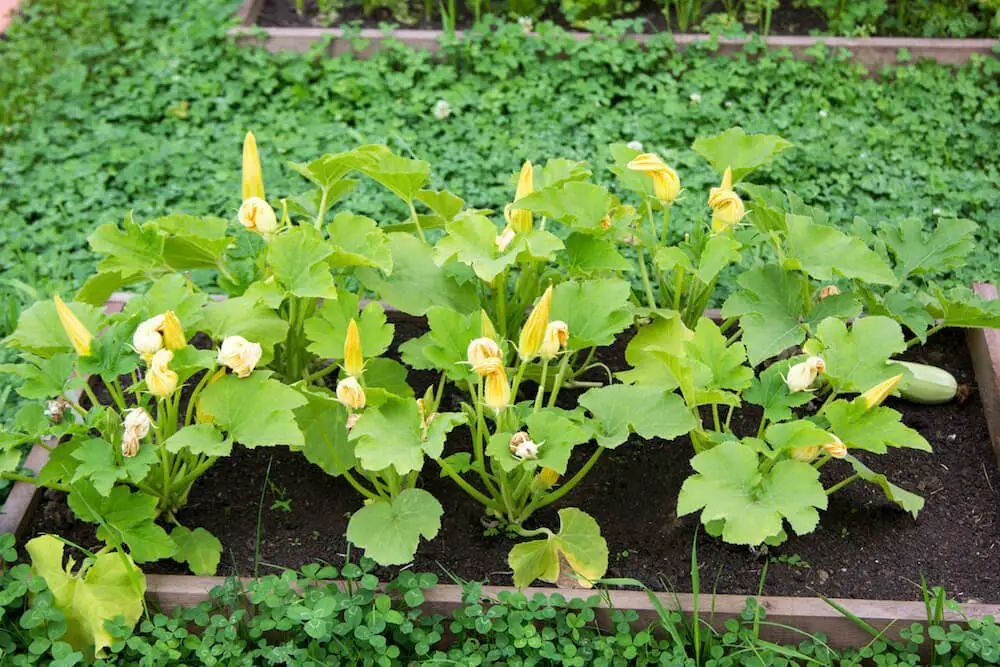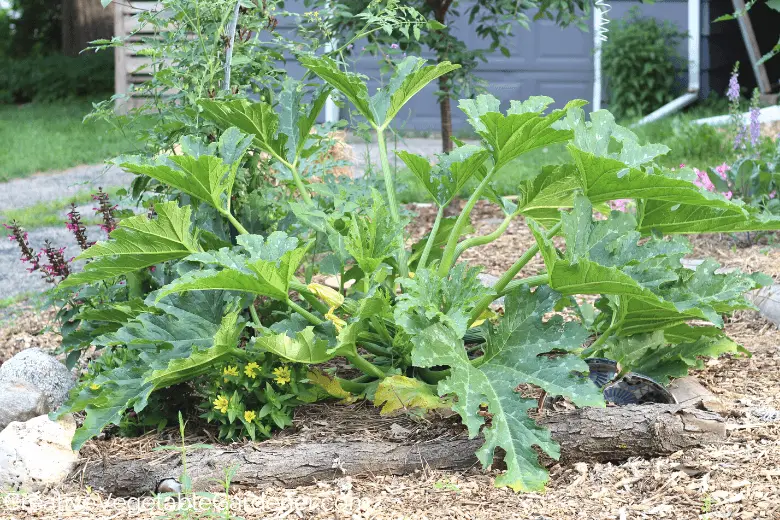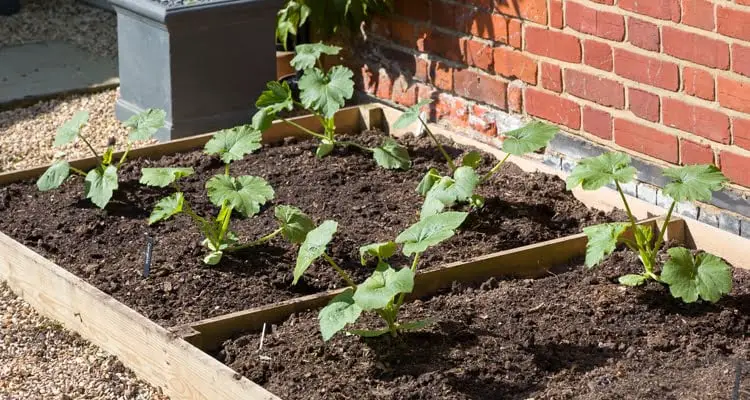If you’ve always dreamed of growing your own vegetables but have limited space, planting zucchini in a raised bed is a great option for beginners. This comprehensive guide will walk you through the steps of preparing your raised bed, selecting the right zucchini variety for your climate, and planting and caring for your zucchini plants. With these easy-to-follow tips, you’ll soon be enjoying a bountiful harvest of fresh and delicious zucchinis right from your own backyard. So grab your gardening gloves and let’s get started!
Choosing the Right Raised Bed
Size
When choosing a raised bed for your zucchini plants, it is important to consider the size of the bed. A good rule of thumb is to have a raised bed that is at least 18 inches deep and 3-4 feet wide. This will provide enough space for the zucchini plants to spread out and grow properly.
Material
There are several materials to choose from when it comes to raised beds. Popular options include wood, metal, and plastic. Wood is a classic choice that blends well with most garden styles, while metal and plastic beds are more durable and require less maintenance. Consider the aesthetics, durability, and cost when selecting the material for your raised bed.
Location
Choosing the right location for your raised bed is crucial for the success of your zucchini plants. Zucchini requires full sunlight for at least 6-8 hours a day, so make sure to select a spot in your garden that receives ample sunlight. Additionally, consider the proximity to a water source for easy irrigation and accessibility for maintenance.

Preparing the Raised Bed
Soil Preparation
Before planting your zucchini seeds or seedlings, it is important to prepare the soil in your raised bed. Start by removing any weeds or grass from the bed to ensure a clean space for your zucchini plants. Loosen the soil using a garden fork or tiller to improve drainage and aeration.
Amending the Soil
Once the soil is prepared, it is recommended to amend it with organic matter such as compost or well-rotted manure. This will enrich the soil with essential nutrients and improve its overall fertility. Mix the organic matter into the top few inches of the soil to ensure it is evenly distributed throughout the raised bed.
Fertilizing
In addition to organic matter, zucchini plants benefit from regular fertilizer applications. Choose a balanced fertilizer with equal proportions of nitrogen, phosphorus, and potassium. Apply the fertilizer according to the manufacturer’s instructions, usually in early spring before planting or as a side dressing during the growing season.
Watering System
To ensure proper hydration for your zucchini plants, consider implementing a watering system in your raised bed. This can be as simple as installing a drip irrigation system or using a soaker hose. These methods deliver water directly to the roots, promoting efficient uptake and reducing water waste through evaporation.

Getting Started with Zucchini Seeds
Choosing the Right Seeds
Selecting the right zucchini seeds is essential for a successful harvest. Consider factors such as the variety, disease resistance, and growth habit. Popular zucchini varieties include ‘Black Beauty,’ ‘Costata Romanesco,’ and ‘Gold Rush.’ Look for seeds labeled as disease-resistant to minimize the risk of common zucchini diseases.
Seed Starting Indoors
To get a head start on your zucchini plants, you can start the seeds indoors. This is especially beneficial in areas with shorter growing seasons. Start the seeds 4-6 weeks before the last frost date in your area. Plant them in seed-starting trays or pots filled with a seed-starting mix, and keep them in a warm, well-lit area until they germinate.
Direct Sowing Seeds
If you prefer to skip the indoor seed starting process, zucchini seeds can also be directly sown into the raised bed. Wait until the soil has warmed up and all chance of frost has passed. Plant the seeds about 1 inch deep and 3-4 feet apart to allow enough space for the plants to grow and spread.
Transplanting Seedlings into the Raised Bed
Hardening Off
If you started your zucchini seeds indoors, it is important to harden off the seedlings before transplanting them into the raised bed. This involves gradually exposing the seedlings to outdoor conditions, such as sunlight and wind, to acclimate them. Start by placing them outdoors for a few hours a day, gradually increasing the duration over the course of a week.
Transplanting Process
When the seedlings are fully hardened off and the soil in the raised bed is warm enough, it is time to transplant them. Dig a hole in the bed that is large enough to accommodate the seedling’s root ball. Gently remove the seedling from its container, taking care not to damage the delicate roots. Place the seedling in the hole, backfill with soil, and pat it down gently to secure the plant in place.

Providing Optimal Growing Conditions
Sunlight
Zucchini plants thrive in full sunlight. Make sure your raised bed is located in an area that receives a minimum of 6-8 hours of direct sunlight each day. If your garden has partial shade, consider positioning the raised bed where it will receive maximum sunlight during the day.
Temperature
Zucchini is a warm-season crop that prefers temperatures between 70-90°F (21-32°C). The soil temperature should be at least 60°F (15.5°C) before planting the seeds or transplanting the seedlings. Use a soil thermometer to monitor the temperature and wait until it reaches the ideal range for optimal growth.
Watering
Proper watering is essential for healthy zucchini plants. Keep the soil consistently moist but not waterlogged. Check the moisture level regularly and water deeply whenever the top inch of soil feels dry. Avoid overhead watering to reduce the risk of fungal diseases. Instead, direct the water at the base of the plants.
Mulching
Applying a layer of organic mulch around the base of your zucchini plants can provide numerous benefits. Mulch helps to retain soil moisture, regulate soil temperature, and suppress weed growth. Use materials such as straw, wood chips, or compost and spread a 2-3 inch layer evenly over the bare soil, leaving space around the plant stems.
Pruning and Training Zucchini Plants
Why Prune?
Pruning zucchini plants can help improve air circulation, reduce the risk of diseases, and increase harvest yields. Removing excess foliage also allows sunlight to reach the lower leaves and fruits, promoting better overall plant health.
Timing
It is best to prune zucchini plants early in the growing season when they are still small and manageable. Avoid pruning during hot, dry periods as this can stress the plants. Regularly inspect your plants for any overcrowded or damaged branches that need to be pruned.
Pruning Techniques
When pruning zucchini plants, use clean and sharp pruning shears to make clean cuts. Start by removing any dead or yellowing leaves. Next, thin out crowded branches and remove any suckers or side shoots that are competing for nutrients. Aim to maintain an open, well-ventilated canopy.
Training Methods
To maximize space and increase airflow, zucchini plants can be trained to grow vertically rather than sprawling on the ground. Install trellises or sturdy stakes near each plant and gently tie the main stem to the support structure using soft plant ties. As the plant grows, guide the main stem upward to encourage upward growth.
Managing Pests and Diseases
Common Pests
Zucchini plants are susceptible to various pests, including aphids, cucumber beetles, and squash bugs. Monitor your plants regularly for signs of pest infestations, such as yellowing leaves, holes in the foliage, or visible insects. Remove any affected leaves or apply organic insecticides if necessary.
Common Diseases
Zucchini plants can be susceptible to diseases such as powdery mildew, bacterial wilt, and blossom end rot. To prevent these diseases, ensure proper air circulation, avoid overwatering, and practice good sanitation by removing any affected plant debris promptly. If necessary, apply fungicides or follow appropriate treatment methods.
Prevention and Control
Implementing preventative measures can greatly reduce the risk of pests and diseases in your zucchini plants. Companion planting can help deter pests, as certain plants repel insects naturally. Regularly inspect your plants for any signs of trouble, and promptly address any issues to prevent further spread.

Harvesting Zucchini
Determining Maturity
Zucchini is typically ready for harvest when the fruits are 6-8 inches long and have a vibrant color. Avoid leaving the zucchinis on the plant for too long, as they can quickly become overgrown and lose their tenderness. Regularly check your plants and harvest the fruits as they reach the desired size.
Harvesting Techniques
To harvest zucchini, use a sharp knife or pruners to cut the fruit from the plant. Leave a small stem attached to the zucchinis, as this can help prolong their shelf life. Handle the fruits with care to avoid damaging them, and place them gently in a basket or container to prevent bruising.
Tips for Maximizing Zucchini Production
Succession Planting
To ensure a continuous harvest throughout the season, consider succession planting zucchini. Plant new seeds or seedlings every few weeks to stagger the maturity dates. This will provide a steady supply of zucchinis over an extended period.
Pollination
Zucchinis rely on pollination to produce fruit. Encourage pollinators such as bees and butterflies to visit your garden by planting flowers nearby. Additionally, you can manually pollinate the zucchini flowers by gently transferring pollen from the male flowers to the female flowers using a small brush or cotton swab.
Companion Planting
Companion planting can benefit zucchini by enhancing growth and deterring pests. Planting herbs like basil, dill, or marigold can help repel potential pests while attracting beneficial insects. Avoid planting zucchini near potatoes or other susceptible plants to prevent the spread of diseases.
Proper Harvesting
To maximize zucchini production, it is essential to harvest the fruits at the right time. Regularly inspect your plants and harvest zucchinis promptly when they reach the ideal size. Overgrown zucchinis can drain plant energy and reduce overall productivity, so be diligent in harvesting at the appropriate stage.
Troubleshooting Common Zucchini Problems
Blossom End Rot
Blossom end rot is a common issue in zucchini plants and is characterized by dark, sunken spots at the blossom end of the fruit. This is typically caused by calcium deficiency or inconsistent watering. Ensure the soil is adequately moist and supplement with calcium-rich amendments or foliar sprays if needed.
Powdery Mildew
Powdery mildew appears as a white, powdery substance on the leaves and stems of zucchini plants. It is caused by fungal spores and thrives in warm, humid conditions. To prevent powdery mildew, provide adequate air circulation, avoid overhead watering, and apply organic fungicides if necessary.
Fruit Rot
Fruit rot in zucchini can occur when the fruits come into contact with moist soil or are exposed to excessive moisture. To prevent fruit rot, use mulch to create a barrier between the fruit and the soil. Additionally, ensure proper drainage in your raised bed and water at the base of the plants to minimize contact with the fruits.
By following these comprehensive guidelines, you’ll be well-equipped to plant zucchini in a raised bed successfully. With proper preparation, care, and attention, you’ll soon enjoy a bountiful harvest of delicious zucchinis straight from your garden. Happy planting!



